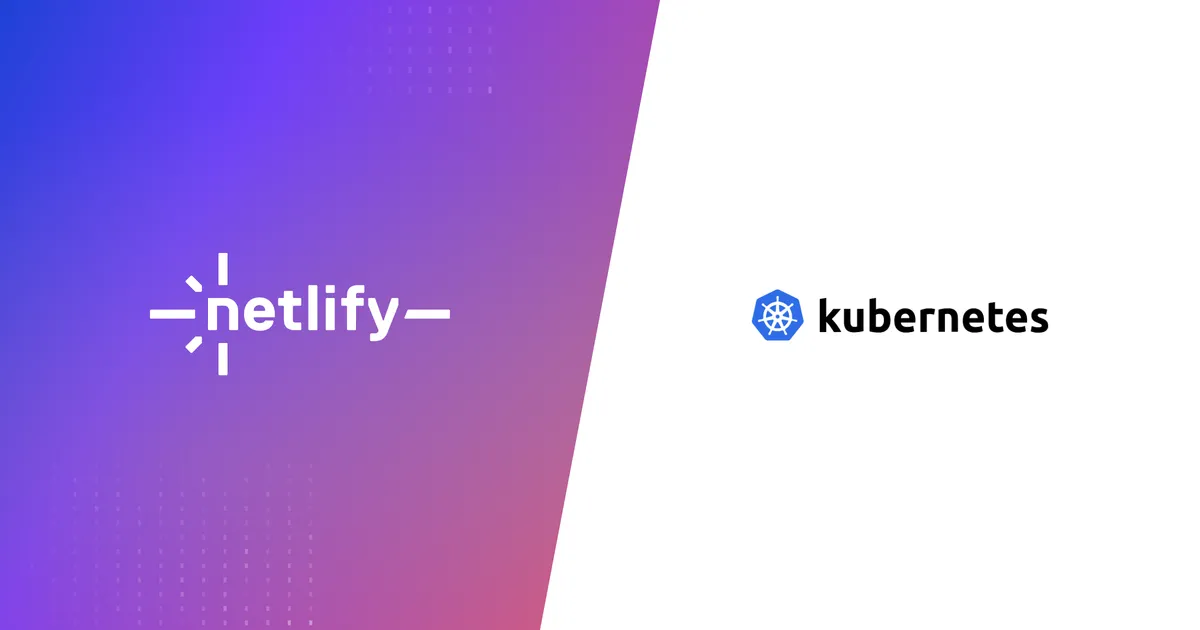The Cloud Native Computing Foundation (CNCF) is the organization behind some of the world’s biggest and most influential open-source software projects. Among them is Kubernetes (K8s). Originally designed by Google, the project is now maintained by a worldwide community of contributors—built and hosted on Netlify.
With an unparalleled reputation in the open-source community, CNCF and its member projects approach open-source management meticulously. And not surprisingly, that includes selecting the best platform for cloud hosting and deployment.
It’s important to note that as a CNCF project, you’re offered flexibility and autonomy when selecting which software and tools you want to use. Nonetheless, K8s prefers Netlify.
“The majority of CNCF projects use Netlify. It’s also one of the third-party services that our projects are most happy with.” -Chris Aniszczyk, CTO, CNCF
Here’s why.
Why Kubernetes prefers Netlify
When done right, open-source projects have a ton of benefits. After all, the cumulative knowledge of a group of diverse contributors is stronger than that of a few, internal developers. However, managing an open-source project successfully is difficult without the right tools and solutions in place.
With Netlify, Kubernetes benefits from:
- Streamlined collaboration through automatic deploy previews
- Stronger tooling through seamless integration with GitHub
- Decreased complexity through unparalleled CI/CD
Since Kubernetes launched over nine years ago, it’s changed and grown tremendously. From the Kubernetes website to the docs to the release notes sub-website, the K8s project is massive and must focus on reliability.
“When we have something that works, we don’t want to change it. For Kubernetes, our Netlify setup has been the same for at least five years. It’s perfect.” -Jeffrey (Jeefy) Sica, Kubernetes Contributor, and Head of Projects, CNCF
Just think about it. As of April of this year, Kubernetes is home to 43 sites with some staggering development metrics. Here’s a snapshot of the site.
On average, the Kubernetes site:
- Does 87 builds per day
- Uses 180GB of bandwidth per day
- Requires 264 build minutes per day
- Touts over 3000 active contributors
When a site is this large and leverages this many contributors, Netlify must work for them. Through a revolutionized CI/CD process, what was once a resource-intensive process is now a single-click deployment. What’s more, Netlify offers K8s automatic deploy previews. As an open-source project, all the contributors must be able to collaborate without interruption and switching between solutions. With deploy previews:
“I can push a PR change to the website. Within 30 seconds the site is completely rebuilt. Then I can link it to other people for in-depth code reviews before it ever gets released.”-Jeffrey (Jeefy) Sica, Kubernetes Contributor, and Head of Projects, CNCF
To double down on the importance of deploy previews—consider a situation where there’s a bug. With deploy previews, any contributor can help identify the problem, work through it, and ultimately find a resolution—all within the same ecosystem.
What’s next for Kubernetes?
It should come as no surprise that AI and LLMs are going to shake up how the internet evolves. One sight K8s has their eyes set on is the incorporation of LLMs within their docs. This way, users won’t have to read through large bodies of text or employ command+f. Instead, they’ll be able to ask questions in their own words and AI will help to surface answers faster than ever before.
As always, preparing for the future of the open web is something Netlify cares about deeply. Curious if launching an open-source project is the right move for you or your business? Or just want to talk future-proofing? Get in touch with one of our experts today.









